Author: Anna McQuinn
Illustrator: Rosalind Beardshaw
Publisher and Year: Charlesbridge, 2014
Number of Pages: 24
Genre: Fiction
Analysis: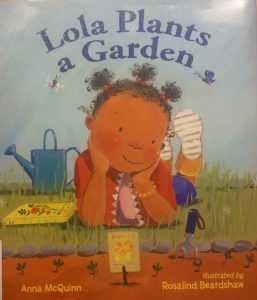
This book is about a little girl named Lola who creates a garden with her parents. Throughout the book we see how she goes about making her gar
den and we see it grow into a beautiful creation.
This text can function as a window, mirror and a door for the readers. It would
function as a window for readers who have never planted a garden of their own. In the text they will see and learn the process of how to create a garden and what one needs to help a garden grow. For readers who have experience with gardening this text would function as a mirror since it is something they can relate to. When reading this story they can connect their own experiences with Lola’s experiences. This text can also function as a door for readers who want to apply Lola’s idea to their own lives. Maybe for these readers after reading this text realize how fun it can be to plant a garden and they go off and plant on of their own. The main characters of this text are African Americans but there is diverse culture throughout the story. When Lola has her friends over to see her garden three different cultures are represented. This presence of culture makes the story a lot more relatable for many different types of readers. I like how in this story Lola decides that she wants to make a garden and she works hard to make it happen. She goes to the library to pick up books about flowers, goes to the seed store, and learns how to care for a garden. This shows how independent Lola is that she is able to work hard for something she wants without her parents doing all the work for her. I think that this is an important message for young readers to see so they know that if they want something in life they will have to work hard to achieve it, someone will not do it for you.
The images within this text are beautiful. They are full of color and the images seem to come alive when the flowers start to grow. In the text Lola is always facing towards the right showing that she is moving forward with her garden. It is seen in the illustrations how excited Lola is to plant her own garden just like her mom’s. I really enjoyed reading this book; the images made it fun and it can show readers that if they work hard towards something they want they can create a beautiful thing.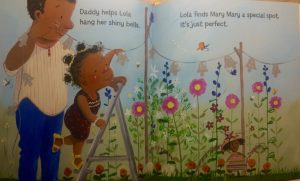

 This story is about a young girl and her love for paletas and her barrio. A paleta is an icy fruit popsicle, and a barrio is a neighborhood. On each page she talks about all the roles that the paleta plays in her neighborhood.
This story is about a young girl and her love for paletas and her barrio. A paleta is an icy fruit popsicle, and a barrio is a neighborhood. On each page she talks about all the roles that the paleta plays in her neighborhood.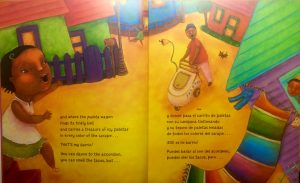
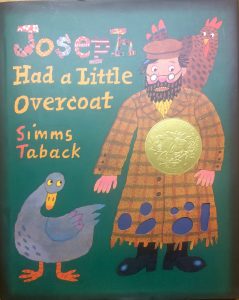
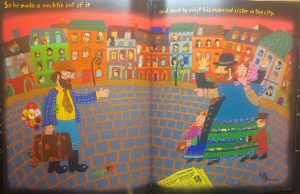
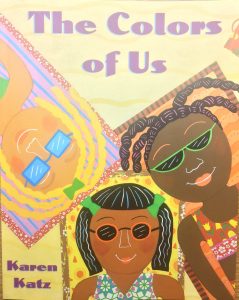
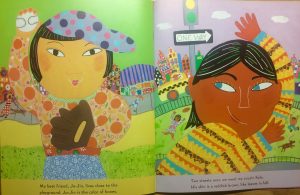
 One Fine Day is a Caldecott Medal winner. It is a story about a little fox that gets is tail cut off by an old woman for drinking her milk. The only way he is able to get his tail back is if he brings the old woman more milk.
One Fine Day is a Caldecott Medal winner. It is a story about a little fox that gets is tail cut off by an old woman for drinking her milk. The only way he is able to get his tail back is if he brings the old woman more milk.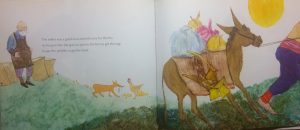
 her is a story about a woman named Miss Sally Ann Thunder Ann Whirlwind and her adventure with Fireeyes the panther. The story starts off talking about all the things she does which is spin yarn, make clothes, and milk cows. On day she goes into the forest and runs into the panther, they fight for days then they become good friends. The panther ends up living with Miss Sally Ann in her house and they cook, clean, play and sing together.
her is a story about a woman named Miss Sally Ann Thunder Ann Whirlwind and her adventure with Fireeyes the panther. The story starts off talking about all the things she does which is spin yarn, make clothes, and milk cows. On day she goes into the forest and runs into the panther, they fight for days then they become good friends. The panther ends up living with Miss Sally Ann in her house and they cook, clean, play and sing together.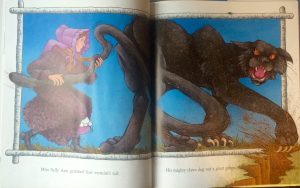
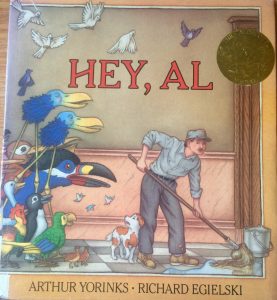
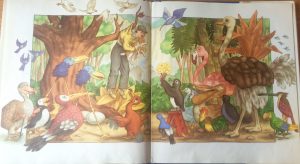
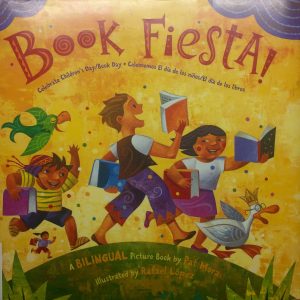 Analysis:
Analysis: 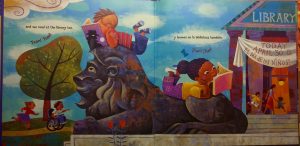
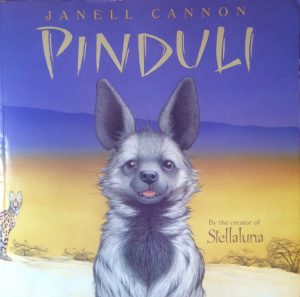 Pinduli is the story of a beautiful hyena that wanders away from her mother into the East African wild. While Pinduli is wandering she runs into dogs, a lion and a zebra who all judged Pinduli’s looks. Pinduli becomes very self conscience and starts to change her looks to fit in, she gets to the point where she covers herself in dust making her look like a ghost. All the animals that once teased her were now afraid of her and begged her to forgive them for being mean since the believed she was a ghost. Pinduli told them they must find out why they were teasing others and give the one you teased food to be forgiven. Pinduli’s mother found her and reminded her of her inner and outer beauty
Pinduli is the story of a beautiful hyena that wanders away from her mother into the East African wild. While Pinduli is wandering she runs into dogs, a lion and a zebra who all judged Pinduli’s looks. Pinduli becomes very self conscience and starts to change her looks to fit in, she gets to the point where she covers herself in dust making her look like a ghost. All the animals that once teased her were now afraid of her and begged her to forgive them for being mean since the believed she was a ghost. Pinduli told them they must find out why they were teasing others and give the one you teased food to be forgiven. Pinduli’s mother found her and reminded her of her inner and outer beauty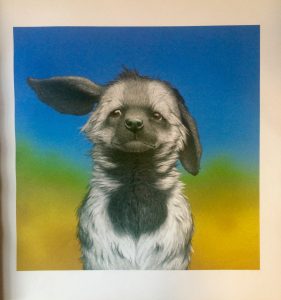
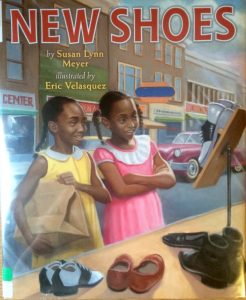 New Shoes is about a young African American girl, Ella Mae, who goes to the local shoe shop to get new shoes. But since it was during the time of Jim Crow laws Ella Mae was not allowed to try on any of the shoes because of her skin color. She found out that this was something that happened to every African American person, so Ella Mae and her best friend Charlotte decided to do something about it. They started their own shoe store by colleting old shoes and fixing them up to be as good as new. At their shoe shop everyone was able to try on all the shoes they wanted.
New Shoes is about a young African American girl, Ella Mae, who goes to the local shoe shop to get new shoes. But since it was during the time of Jim Crow laws Ella Mae was not allowed to try on any of the shoes because of her skin color. She found out that this was something that happened to every African American person, so Ella Mae and her best friend Charlotte decided to do something about it. They started their own shoe store by colleting old shoes and fixing them up to be as good as new. At their shoe shop everyone was able to try on all the shoes they wanted.